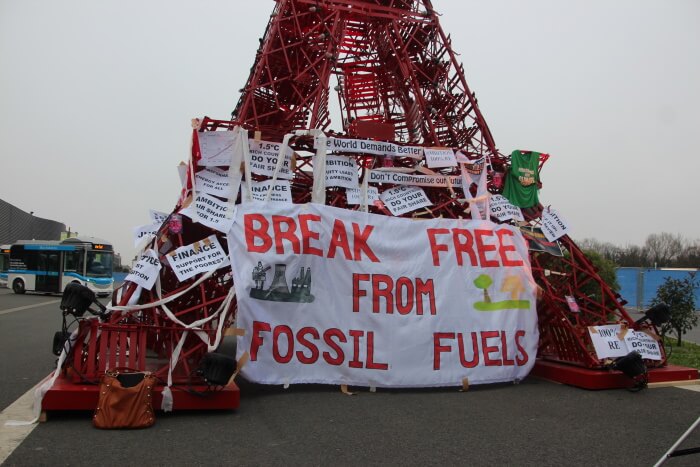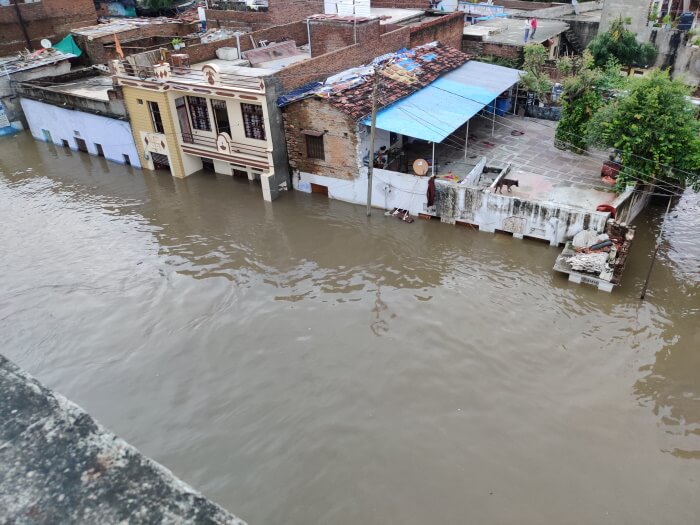We can no longer ignore Climate Change in the belief that it is in the future; the challenge is here and now. Every city has been affected, millions are reeling under its adverse impact. In India, long described as the country of its villages and where the largest number of Indians live even today, cities carry nearly 35 to 38 per cent of the country’s population – that’s nearly 500 million. Climate-related events have the worst impact on the most vulnerable among them but also devastate city systems.
The National Action Plan on Climate Change (NAPCC) was formally launched in June 2008 and reviewed in 2015. Gradually, states and especially cities have been encouraged to draw up their own plans of mitigation and adaptation to Climate Change. Whether they dovetail into the National Plan and how is up for debate, how the city plans – the few that exist – help towards meeting India’s international commitments on reducing emissions remains to be seen.
The economic growth riding on fossil fuel is no longer sustainable – either for ecology or for people. Coal and carbon-based infrastructure cannot be wishes away, but it cannot continue to be business as usual either. The recognition at the national level came early, back in 2008 during the first UPA government led by Dr Manmohan Singh, but concerted action to devolve responsibilities to cities and steer them towards lowering emissions did not happen as it should have. This did not happen even in the early part of the Narendra Modi-led government either.
The Plan
What does the Plan have? It outlines a national strategy to enable the country to adapt to Climate Change and enhance the ecological sustainability of India’s development path. It stresses that maintaining a high growth rate is essential for increasing living standards of the vast majority of people of India but reducing their vulnerability to the impact of Climate Change is equally important too.
The Plan is clear that the country’s development goals must be met with specific focus on reducing carbon emission, improving energy efficiency, developing forest cover and its habitat for long-term sustainability. Accordingly, there are sectors or Missions outlined in the Plan.

Photo: John Englart/ Creative Commons
The eight sectors or ‘National Missions’ form the core of the Plan and focus on promoting adaptation and mitigation, energy efficiency, and natural resource conservation. [1]
They are:
1. National Solar Mission
2. National Mission for Enhanced Energy Efficiency
3. National Mission on Sustainable Habitat
4. National Water Mission
5. National Mission for Sustaining the Himalayan Eco-system
6. National Mission for a Green India
7. National Mission for Sustainable Agriculture
8. National Mission on Strategic Knowledge for Climate Change
As with most governance structures, the responsibility for the Missions are with different union ministries or require collaborations and partnerships between different ministries. This coordination – or the lack of it – has been a stumbling block.
Recent years
The Plan was strengthened in 2015 by launching a dedicated fund, the National Adaptation Fund on Climate Change (NAFCC), to meet the costs of adaptation and mitigation to Climate Change. States and union territories of India that are particularly vulnerable to the adverse effects of Climate Change could find support through this fund.
However, though states and union territories draw and receive funds from the central government, climate action for both mitigation and adaptation happens at local levels – in cities and districts. The lack of a clear command chain has been felt in cities grappling with the worst impact of climate-related events.
At COP26 in 2021, India proposed a movement to face Climate Change challenges focused on deliberate and optimal usage of natural resources, called the Panchamrit (nectar of five ingredients offered during puja) of India’s climate action policy. The five elements are:
- Increase capacity and contribution of non-fossil fuel energy
- Improving consumption scale and contribution of renewable energy
- Reduction of total projected carbon emission
- Reduction of carbon intensity
- Steps towards achieving net-zero emission
In October this year, the government decided to add three more Missions to the original Plan – on the coastal ecosystem, human health, and sustainable transport. And urged all states and union territories to devise their own State Action Plans on Climate Change to complement the NAPCC and chalk out initiatives and measures to address Climate Change. The National Health Mission aims to strengthen health preparedness and response at the central, state and district levels by building early warning systems and health surveillance to prevent and mitigate extreme heat.
Reviews
Those working in the Climate Change domain and climate activists are not convinced about the scope or depth of the Plan. A host of reactions can be found here.
Among the criticisms is that the Plan lacked depth, vision, and urgency, but these have not been addressed in the update done in 2015. Also, there has been concern on how individual projects in cities conform to the climate lens and meet targets, and how these then allow India to present a composite picture to the world. And that the Plan has been more a guideline for states and cities rather than a concrete roadmap of actions, roles and responsibilities in India’s fight against Climate Change.
On the other hand, the National Institute of Urban Affairs which identifies itself as a national think tank but works in close tandem with the union Ministry of Housing and Urban Affairs (MOHUA) has set up a centre devoted to climate issues and cities. It works with stakeholders in cities to coordinate climate actions and specifically provides support to cities on capacity building, policy and planning, research and partnerships among other services. This demonstrates the intent of the government to address the Climate Change issue with the seriousness it deserves.
“Capacity building for climate change is needed throughout India’s vast government structures at three levels of government (central, state and local). States in particular, where people live and where the climate actions will be taken, require a lot of help with climate change which has become a bugbear and an extra responsibility added to an already long list of administrative tasks with not enough state employees to carry them out,” reads a research paper by Mohua Mukherjee.[2]

Photo: VedJoshi1/ Creative Commons
The ecological way ahead
A robust National Plan devolving into equally strong city-level plans that address the specific challenges of each city is the way forward as extreme weather events and sea-level rise become major risk factors in the decade ahead. There is talk about building climate-resilient cities which becomes a project in itself, often alienating people who live and earn their livelihoods in cities under extreme conditions, and at the cost of not being cohesive with the natural ares in that city.
The way forward for a climate action plan has to be ecologically sound and socially equitable, which calls for this plan to be integrated with the development plan for the cities and build with natural ecology of the city – not destroy it in urban planning by building at its cost and then seek to repair or renew it in a piecemeal manner.
Climate action plans cannot be separate or distinct from urban planning; all urban planning must have a climate lens to it.
Cover photo: shobhit pant/ Unsplash




